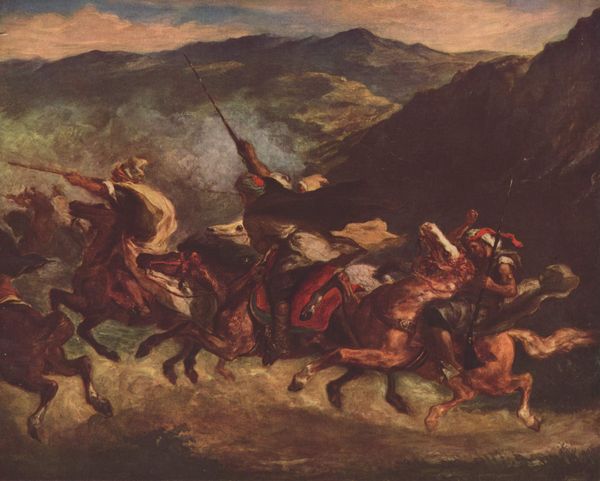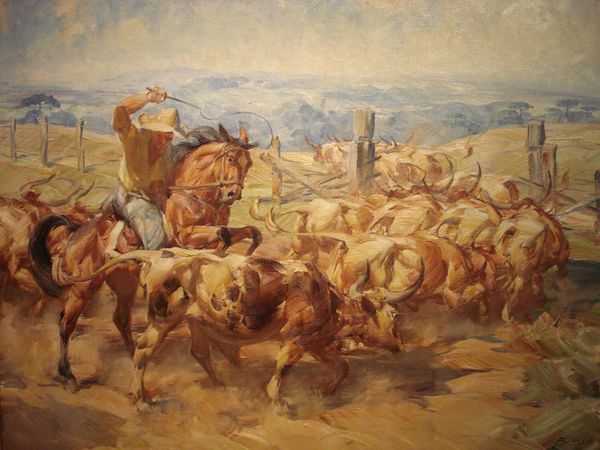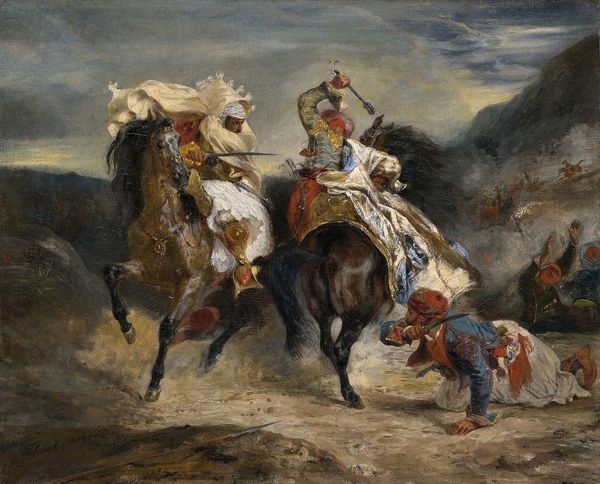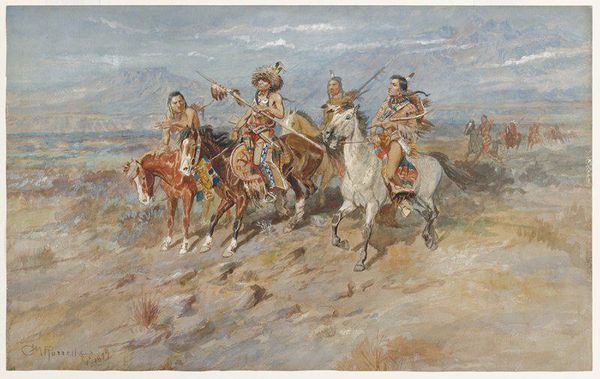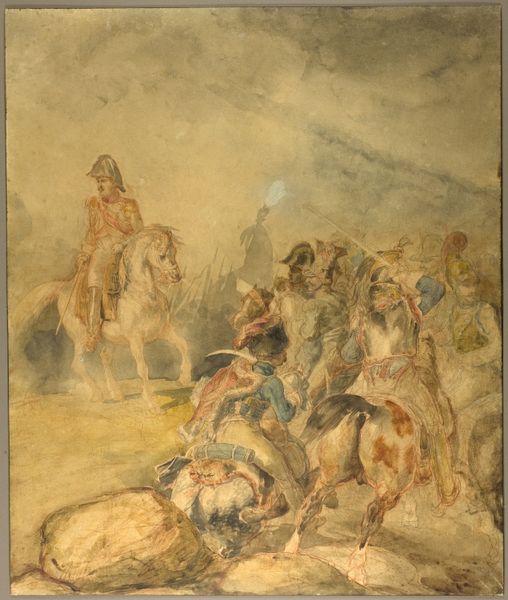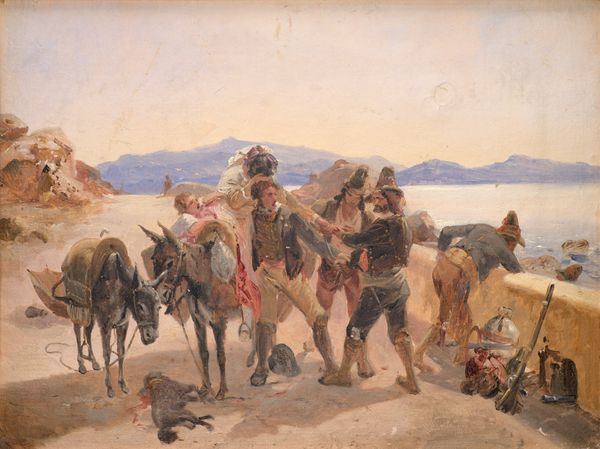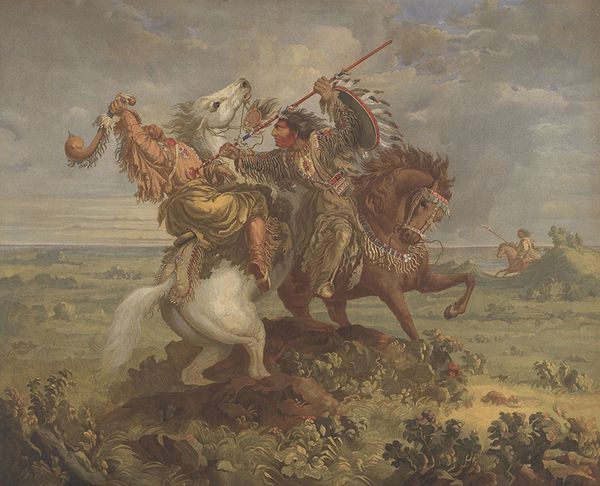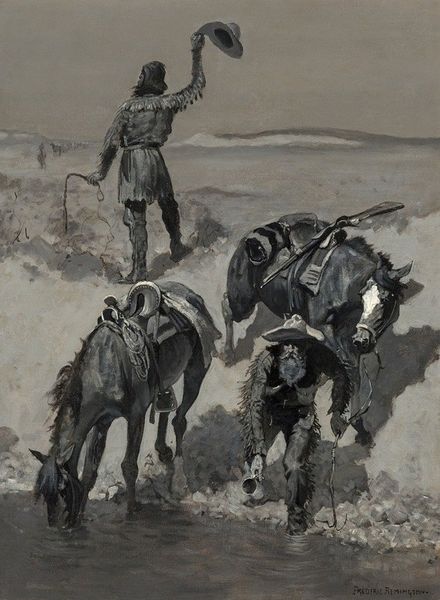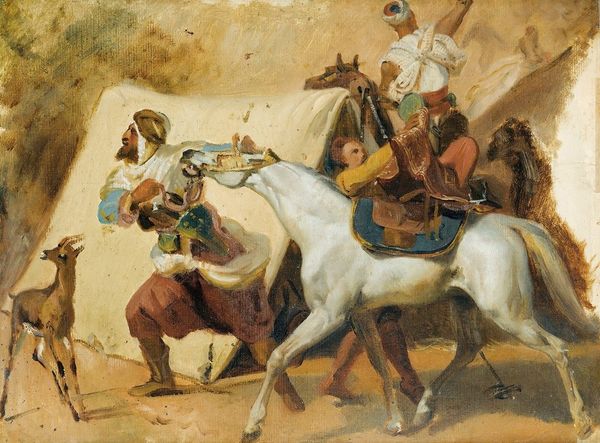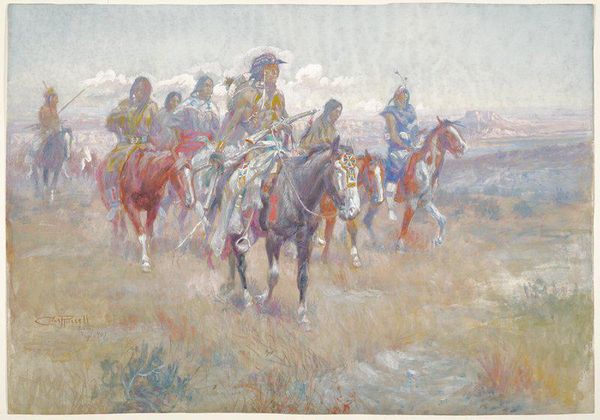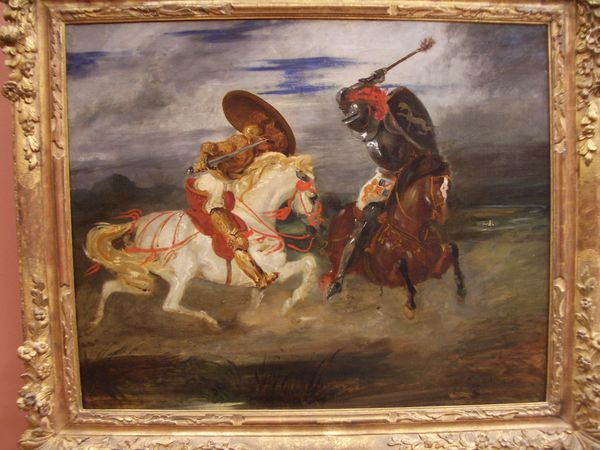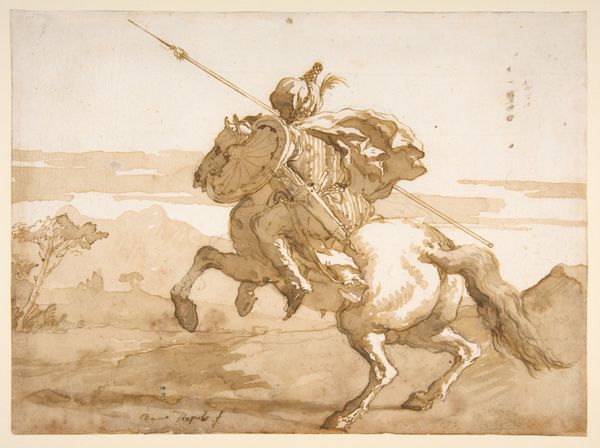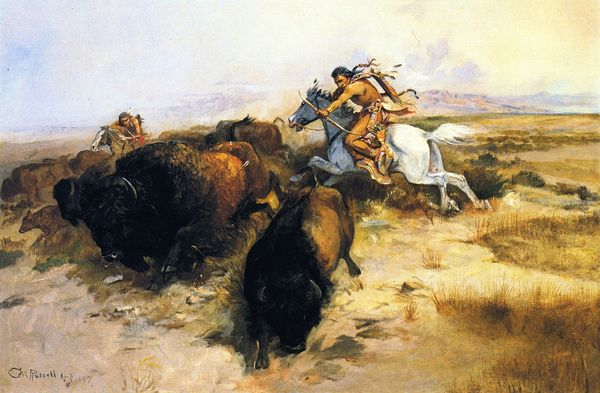
Copyright: Public domain
Curator: Georgi Mashev painted “Krali Marko” in 1932, using oil paint. What strikes you first about this work? Editor: The almost operatic theatricality! A landscape imbued with a mythic sensibility, populated by figures seemingly caught in the middle of some grand, historical drama. Curator: It’s a rich scene, to be sure. Observe how Mashev deploys a somewhat muted palette. The restrained use of color lends a certain melancholic quality to the figuration. Editor: Absolutely, that muted palette, particularly the ochre and earthen tones, evokes a sense of folklore. Krali Marko, a heroic figure from South Slavic folklore, embodied strength and justice. His visual cues—the fur cap, pipe, and even the imposing steed— resonate with historical depictions and oral traditions. The secondary figure—his jester, perhaps—almost feels like a discordant element, challenging Marko's stoicism with a primal energy. Curator: Focus on how Mashev utilizes the landscape, that expansive background with layered perspective. The positioning creates a subtle balance in relation to the main subject, creating a powerful sense of depth. The mountain silhouettes in the distance evoke the sublime. Editor: Agreed, that landscape is heavy with meaning. Mountains often represent challenges, trials, or even spiritual enlightenment in iconography. Considering Marko's role as a defender, are those mountains perhaps visual metaphors? And what of the smaller figure by the tired-looking donkey on the right? A sign of times gone awry? Curator: A curious question. If one views the brushstrokes—their application—it is clear Mashev created a network of short dashes, to emphasize forms, yes, but consider its significance in how it structures the broader image. Note the consistent texture throughout, a deliberate stylistic choice by the artist. Editor: It does lend it all a dreamlike or mythical dimension, and to me the tired-looking donkey with its sad handler is perhaps to represent how much times have changed since Krali Marko’s own time. It makes it very clear he lives on as a strong memory, a visual culture and cultural memory, maybe? Curator: Perhaps. Editor: Ultimately, the visual dialogue Mashev constructs—between folklore and materiality, history and technique—makes the work arresting. Curator: Agreed, an elegant intersection between tradition and innovation that stimulates deeper enquiry.
Comments
No comments
Be the first to comment and join the conversation on the ultimate creative platform.
